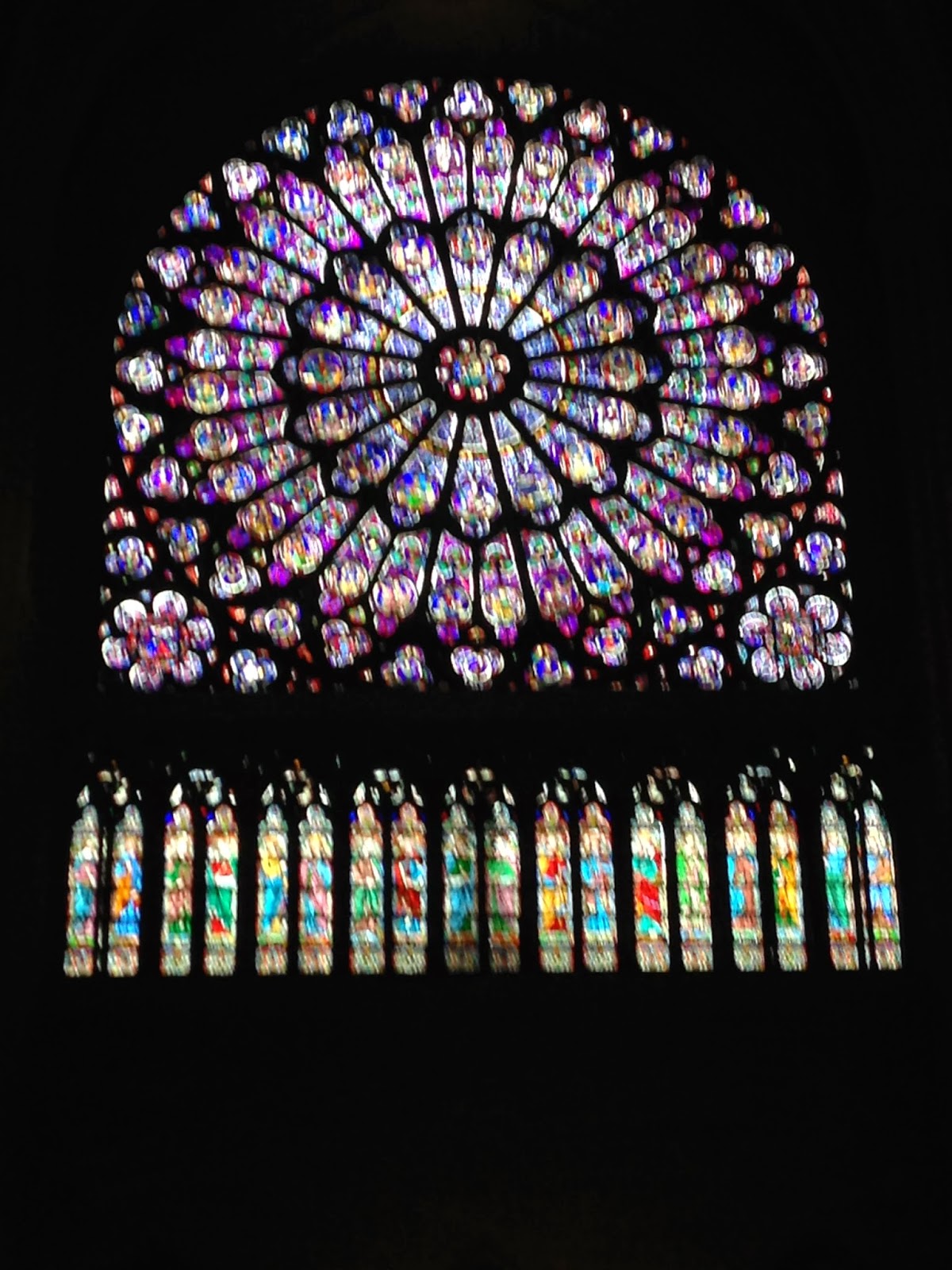We left
Paris via train for
Bayeux in
Normandy to stay for two nights, spending a full, thought-provoking day on a tour of the
D-Day landing area.
We stood on the soft, pebbly sands of
Omaha Beach, very peaceful, very pretty at mid-tide, with our backs to the
English Channel, looking up towards the hills and remnants of concrete bunkers (gun batteries of the
Atlantic Front - some of which we climbed down into later), being visually and mentally guided back to June 6, 1944 . . . thinking what it must have been like to come ashore amidst enemy fire in a strange land and fight your way across these sands and up those hills, trying with your life to overcome obstacles and make a difference in the world.
And, as we all know, they succeeded.
We drove from spot to spot on the Beach Road, a main thoroughfare through Normandy and the road the troops used towards their mission, hearing stories and gaining insights from our guide Peter.
Peter: One of the worst crimes of the Nazis was “stealing the minds of German youth,” causing a generation to be brainwashed to their cause.
With a sense of awe, we located Colleen’s Uncle Mike Kelly’s grave marker at the
American Cemetery: Plot F, Row 15, Grave 18. He was in the 507th Infantry Parachute Division - later we read about the 505th, 507th, and 508th at
Ste Mere-Eglise Airborne Museum.
 |
| Marble crosses and their shadows lined up with precision at the American Cemetery with Omaha Beach in the background. |
Often tears welled up throughout this day, especially at the Airborne Museum when coming upon a memo from a paratrooper: “There is no better place to die.”
Paratroopers jumped out of airplanes (of course - but when we think that planes were a fairly new concept at that time, that’s even more remarkable), landing in the total darkness of dawn behind enemy lines, needing to quickly determine where they were and locate other troops, while fighting off Germans they encountered. Their job was to make the villages safe for those coming ashore later.
And again, as we all know, they succeeded.
At
Pointe du Hoc, we gazed upon a landscape full of craters and picked our way across destroyed circular concrete bunkers, and then looked straight down the steep cliffs which Rangers scaled in order to take out German troops there. Seems an impossible task,
and yet, again as we all know, they did it. So sadly, out of 225 Ranger only 90 made it.
Franklin D. Roosevelt, 1941: “We, and all others who believe in freedom as deeply as we do, would rather die on our feet than live on our knees.”
We drove through many other towns in
Normandy, noting their memorials to their dead and their symbols of appreciation to the Allies -
Longues sur-Mer, (sur-Mer is French for “on the beach”),
Commes,
Port-en-Bessin,
Ste Honorine,
Colleville sur-Mer,
Ste Lauren sur-Mer,
Beuzeville (the only town in this area that did not suffer a casualty - so they erected a memorial to a pilot of a plane that crashed in a nearby field),
Foucaville,
Le Grand Chemin,
Ste Germain,
Ste Marie duMont,
Angoville au Plain,
Carentan.
Now that we’ve actually walked on these beaches and explored these towns, their names will no longer be impersonal settings on a page of history.
They succeeded here, and now we and others can live with the freedoms we have today. This day of re-living history was fascinating, sobering, and inspiringly enlightening.
















